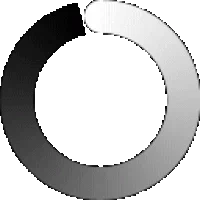Year ends and birthdays are good milestones to reflect on the past and plan for the future. From a professional life perspective, many of us introspect towards the end of the year, thinking about the year gone by – the hits, the misses, and the can-do-betters. Ideally, we want to learn continually and fluidly incorporate the lessons into our immediate next efforts, rather than wait till some year-end introspection. That said, the year-end is always a good checkpoint to take a step back, look at how we’re progressing, and think if any re-orienting is required.
One of my professional responsibilities is to meaningfully guide young leaders and teams on how to think about and plan their current & future work so as to fuel their career growth. This is important to me, because, as a founder of a company, I hold myself responsible for the professional growth of everyone in the company, while moving together collectively towards a common vision.
In this context, over the last year, I interacted with several individuals in different roles, with different expertise, experience, interests, aspirations and expectations. Among other things, I try to help them think about maneuvering the myriad priorities and interests competing for their time, so that they have the best shot at professional growth and job satisfaction. I can abstract two key ideas from those conversations: one to guide longer-term plans, and another to evaluate shorter-term priorities. These two ideas might come in handy as you think about your professional plans for the new year.
1. Think Blend
Today’s world is an increasingly complex place. Some of the biggest innovations are happening when seemingly very different fields are coming together. We cannot be experts in all areas – to innovate and succeed, we will need to collaborate and empathize with people with very different expertise & perspectives. We need to be ready to blend in multi-disciplinary teams, leading and being led, as the situation demands. We’ll need to develop expertise blends – deeper knowledge in our area of specialization, and enough of other relevant areas to have a fair understanding/appreciation. To prepare ourselves for the longer term, we’ll need to Think Blend – deepen the primary axis and open up multiple secondary axes.
2. Think Value
Job satisfaction is a composite of several of our inherent needs – Do I get to work in areas of my interest? Am I learning new things? Am I making an impact through my work? Am I getting paid enough? Do I feel respected and safe at work? While answers to most of these questions are evident, the “impact” part is not always clear; the eventual value of our work is not always apparent to us. To be clear, I’m not talking about the sophistication of one’s work, but if we are able to connect the dots such as – how does my work fit into the larger picture, what problem are we trying to solve as a team, what will be the impact if this problem is solved. When working in large cross-functional teams, spread across geographies, on longer-term projects, we can sometimes lose ourselves in the maze, spending significant efforts on work of minimal eventual value. So, it is important to consciously ask ourselves frequently about the value of our work. This will help minimize effort wastage, if not avoid it completely.
Good luck with the year-end introspection and planning. As you shape your high-level plans for both the long and short terms, Think Blend and Think Value.





